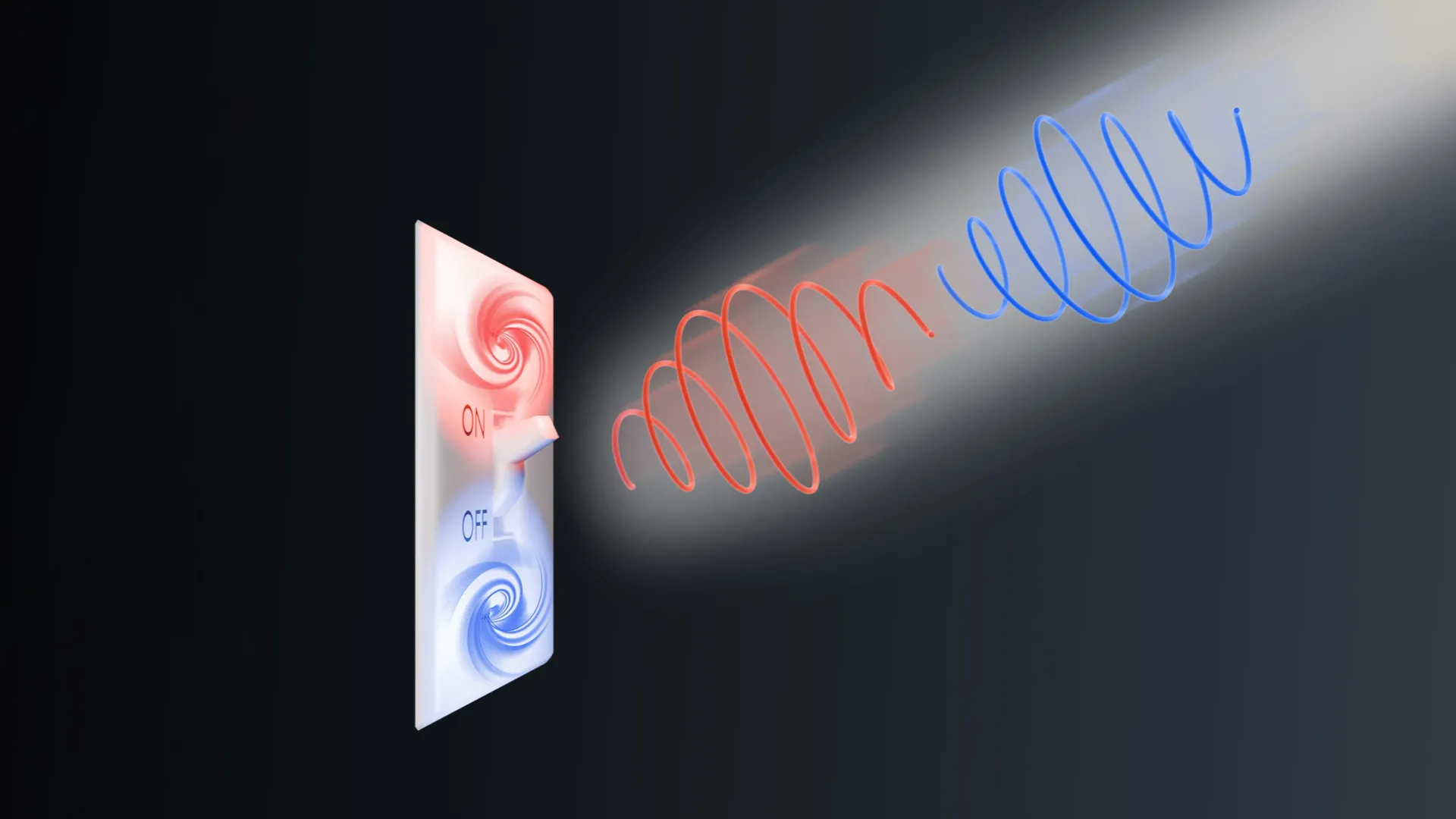A twist of light could power the next generation of memory devices
- Date:
- November 21, 2025
- Source:
- Max Planck Institute for the Structure and Dynamics of Matter
- Summary:
- Researchers have discovered a way to store information using a rare class of materials called ferroaxials, which rely on swirling electric dipoles instead of magnetism or charge. These vortex-like states are naturally stable and resistant to outside interference, but until now were almost impossible to control. By using circularly polarized terahertz light, scientists were able to flip these tiny rotational patterns on command, opening the door to a new form of robust, ultrafast, and long-lasting data storage.
- Share:

Modern digital systems depend on information encoded in simple binary units of 0s and 1s. Any physical substance that can reliably switch between two different, stable configurations can in principle serve as a storage platform for that binary information.
Ferroic materials fall into this category. These solids can be toggled between two distinct states. Well-known examples include ferromagnets, which switch between opposite magnetic orientations, and ferroelectrics, which can hold opposing electric polarizations. Their ability to respond to magnetic or electric fields makes ferroic materials essential components in many modern electronic and data storage devices.
However, they are not without limitations: they are sensitive to external disturbances -- such as strong magnetic fields near a hard drive -- and their performance typically degrades over time. These challenges have motivated researchers to look for new storage approaches that are more resilient.
Ferroaxial Materials and Their Unusual Vortex States
Ferroaxial materials represent a newer branch of the ferroic family. Instead of relying on magnetic or electric polarization states, these materials contain vortices of electric dipoles. These vortices can point in two opposite directions while producing neither net magnetization nor net electric polarization. They are extremely stable and naturally resistant to external fields, but this same stability has made them very difficult to manipulate, limiting scientific progress in this area.
Using Terahertz Light to Switch Ferroaxial States
A team led by Andrea Cavalleri has now demonstrated a method to control these elusive states. The researchers used circularly polarized terahertz pulses to flip between clockwise and anti-clockwise ferroaxial domains in a material called rubidium iron dimolybdate (RbFe(MoO₄)2) .
"We take advantage of a synthetic effective field that arises when a terahertz pulse drives ions in the crystal lattice in circles," explains lead author Zhiyang Zeng. "This effective field is able to couple to the ferroaxial state, just like a magnetic field would switch a ferromagnet or an electric field would reverse a ferroelectric state," he added.
By changing the helicity, or twist, of the circularly polarized pulses, the team could stabilize either the clockwise or anti-clockwise arrangement of electric dipoles. As fellow author Michael Först notes, "in this way enabling information storage in the two ferroic states. Because ferroaxials are free from depolarizing electric or stray magnetic fields, they are extremely promising candidates for stable, non-volatile data storage."
Implications for Future Ultrafast Information Technologies
"This is an exciting discovery that opens up new possibilities for the development of a robust platform for ultrafast information storage," says Andrea Cavalleri. He adds that the work also highlights the growing importance of circular phonon fields, first demonstrated by the group in 2017, as a powerful tool for manipulating unconventional material phases.
This research was largely supported by the Max Planck Society and the Max-Planck Graduate Center for Quantum Materials, which fosters collaboration with the University of Oxford. Additional support comes from the Deutsche Forschungsgemeinschaft through the Cluster of Excellence 'CUI: Advanced Imaging of Matter'. The MPSD is also a partner of the Center for Free-Electron Laser Science (CFEL) with DESY and the University of Hamburg.
Story Source:
Materials provided by Max Planck Institute for the Structure and Dynamics of Matter. Note: Content may be edited for style and length.
Journal Reference:
- Z. Zeng, M. Först, M. Fechner, D. Prabhakaran, P. G. Radaelli, A. Cavalleri. Photo-induced nonvolatile rewritable ferroaxial switching. Science, 2025; 390 (6769): 195 DOI: 10.1126/science.adz5230
Cite This Page: